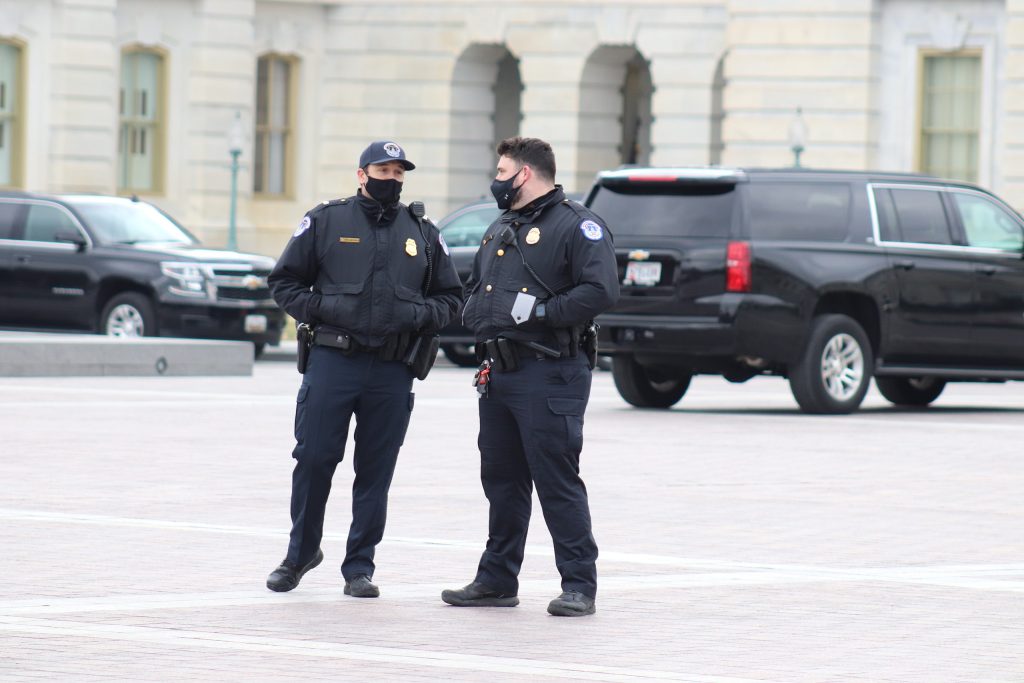
04 Jul Home Confinement: An Effective, Inexpensive & Underused Solution
The United States has the highest incarceration rate in the world. Perhaps unsurprisingly, incarcerating so many people — more than two million, representing roughly one-quarter of the world’s prison population — ain’t cheap. Some estimates indicate that the U.S. spends a whopping $81 million every year on incarceration. That’s a lot of money.
Yet, even with all this expensive incarceration, the U.S. still has crime problems. Indeed, it often finds itself at the middle of the pack when it comes to public safety. And it also has a national debt that never stops going up. If you think there might be a more (or at least equally) effective approach that’s less expensive, you’re not alone. In fact, you’re absolutely right. That more effective, less expensive approach is called home confinement. And the U.S. barely uses it.
Home confinement is just as, if not more, effective at keeping the public safe as prison is.
The BOP defines the term “home confinement” as “any judicially or administratively imposed condition requiring a participant to remain in his or her residence for any portion of the day.” In their new proposed rule regarding home confinement under the CARES Act, the DOJ and the BOP gives us a more down-to-earth view of what home confinement really looks like.
“When an inmate is placed in home confinement, he or she is not considered released from the custody of the Bureau of Prisons[,]” the DOJ and BOP wrote. “[R]ather, he or she continues serving a sentence imposed by a Federal court and administered by the Bureau of Prisons.” It’s true that the people physically leave the BOP’s facilities are return home. But “they are required to remain in the home during specified hours, and are permitted to leave only for work or other preapproved activities, such as occupational training or therapy.” In addition, “[i]nmates in home confinement must submit to drug and alcohol testing, and counseling requirements.”
Throughout someone’s entire time on home confinement, “[s]upervision staff monitor inmates’ compliance with the conditions of home confinement by electronic monitoring equipment or, in a few cases for medical or religious accommodations, frequent telephone and in-person contact.” And, if you don’t comply with the conditions of your confinement, you face “disciplinary action, which may include a return to secure custody or prosecution for escape.”
Most importantly, as the BOP has acknowledged before, “research has shown that offenders can be placed in a home confinement program and maintain accountability.” Put more simply, home confinement works. Unlike the research on long-term prison sentences, which mostly indicates that long-term incarceration isn’t effective, the research on home confinement and electronic monitoring indicates the opposite.
Spending time on home confinement is significantly less expensive than time in prison.
In addition to deterring crime and reducing recidivism, we also know that home confinement doesn’t cost as much. You don’t have to take my word for it. Listen to the DOJ and the BOP instead. “Supervision of inmates in home confinement is … significantly less costly for the Bureau than housing inmates in secure custody,” the two agencies stated with their new proposed rule.
The numbers back that statement up. “In Fiscal Year (FY) 2019,” they wrote, “the cost of incarceration fee (COIF) for a Federal inmate in a Federal facility was $107.85 per day; in FY 2020, it was $120.59 per day.” On the other hand, according to the BOP and the DOJ, “an inmate in home confinement costs an average of $55 per day—less than half of the cost of an inmate in secure custody in FY 2020.”
Between these numbers and the BOP’s and DOJ’s statements, it’s clear: moving people out of BOP facilities and into home confinement “has the added benefit of reducing the Bureau’s expenditures.” We already know that the BOP is pinching pennies under a dangerous cash crunch. So saving taxpayer money without jeopardizing public safety — and, in many cases, improving rehabilitation — is a clear win-win.

We know these facts about home confinement are true because we just proved it.
All of this sounds good in theory. It’s great that research shows that home confinement effectively maintains public safety and improves rehabilitation. And it’s also great that it costs less than half of what in-facility incarceration does. It’d be unserious to suggest otherwise. But our country has relied on prisons and jails rather than supervision staff and electronic monitoring for decades. So it’s not unsurprising that Americans would probably prefer actual proof that home confinement works before we rely on it.
Only eight out of the 4,902 people released under the CARES Act have committed new crimes.
Well, now we have it. Despite some feet-dragging, the BOP has released 4,902 people from its facilities under the CARES Act’s home-confinement provisions. Those 4,902 released under the CARES Act represent only a small piece of the overall pie. That pie includes a total of 36,809 people whom the BOP released between Mar. 26, 2020, and Jan. 10, 2022. How many of those released under the CARES Act committed new crimes? According to the DOJ and the BOP, the answer is almost zero.
“Indeed,” the federal agencies wrote, “of the nearly 5,000 inmates placed in home confinement under the CARES Act, as of January 8, 2022, only 322 had been returned to secure custody for any reason, and only eight for committing a new crime.” Eight. Out of 4,902. Of course, you can’t downplay the significance of the crimes those eight allegedly committed. But none committed murder, assault or any similar offense. Instead, the DOJ and BOP explains, there were “6 for drug-related conduct, 1 for smuggling non-citizens, and 1 for escape with prosecution[.]”
In exchange for those eight new crimes, U.S. taxpayers probably saved around $117 million.
Now, compare the rate of new crimes — just eight out of 4,902 — to the cost savings. Let’s use the figures the DOJ and the BOP used for Fiscal Year 2020. To begin, we know that the BOP saved $65.59 per day per person ($120.59 – $55). For a full year, that’s a savings of $23,940.35 ($65.59 x 365). And, factoring in the 4,902 people moved to home confinement under the CARES Act, that’s a total savings of $117,355,596 ($23,940.35 x 4,902).
I get it. The math isn’t as simple as this. But the obviousness of the taxpayer savings is. At a minimum, we’re savings (tens or hundreds of) millions every year. We do so by moving people that are unlikely to commit new crimes from a prison cell to home confinement. Plus, don’t forget we’re only talking about the 4,902 people the BOP moved to home confinement under the CARES Act. The savings is even greater when you consider the full 36,809 the BOP actually released.

Why would you want to pay twice as much for something that’s not twice as effective?
Ultimately, the DOJ and the BOP have a clear message when it comes to home confinement. “Indeed,” they write, “there is evidence that the Bureau can appropriately manage public safety concerns related to inmates in home confinement, and there are penological, rehabilitative, and societal benefits of allowing inmates to effectively prepare for life after the conclusion of their criminal sentences.”
It’s great that the DOJ and the BOP have taken advantage of its ability to use home confinement to “appropriately manage public safety concerns” while also taking advantage of the “penological, rehabilitative, and societal benefits of allowing inmates to effectively prepare for life after the conclusion of their criminal sentences” and the extraordinary taxpayer savings during the COVID-19 pandemic.
At the end of the COVID-19 pandemic, the home-confinement provisions in the CARES Act come to an end. But if we can “appropriately manage public safety concerns” while also taking advantage of the “penological, rehabilitative, and societal benefits of allowing inmates to effectively prepare for life after the conclusion of their criminal sentences” and the extraordinary taxpayer savings, it’s fair to ask: Why stop after the pandemic?

